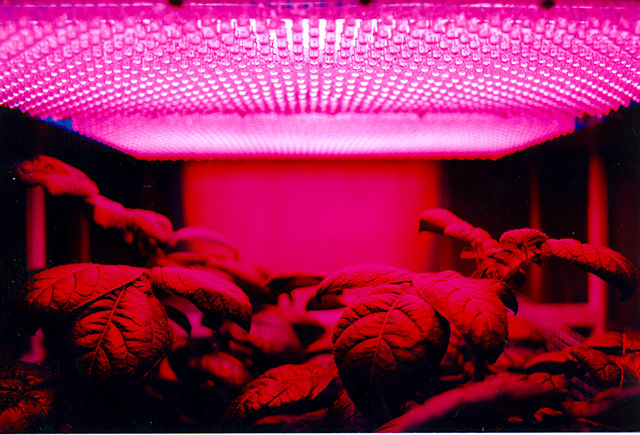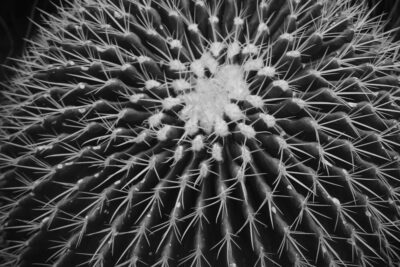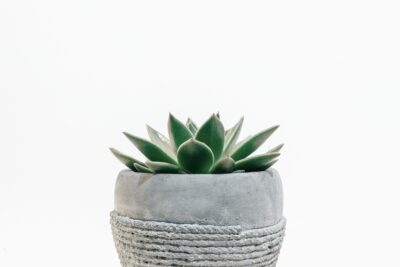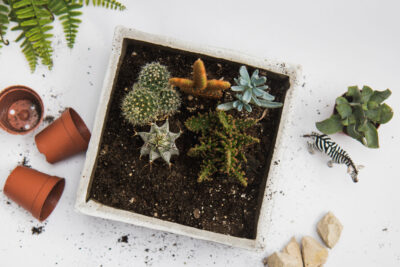
Are my succulents stretching under my grow light? How to prevent it

Succulents are a popular choice for indoor gardening due to their unique shapes and ability to thrive in low-maintenance conditions. However, many succulent owners may notice their plants becoming stretched or leggy over time, especially when grown under artificial lighting. This phenomenon, known as stretching, can be a cause for concern as it can affect the overall health and appearance of the succulents.
We will explore why succulents stretch under grow lights and discuss the factors that contribute to this problem. We will also provide some practical tips and techniques to prevent stretching and promote healthy growth in your succulents. Whether you are a seasoned succulent enthusiast or a beginner, this article will offer valuable insights to help you keep your succulents in optimal condition under artificial lighting.
- Adjust the height of your grow light to provide adequate distance from the plants
- Increase the duration of light exposure to promote compact growth
- Rotate your succulents regularly to ensure even light distribution
- Opt for a grow light with a higher intensity to prevent stretching
- Provide additional light sources from different angles to prevent elongation
- Use a reflective surface or grow tent to maximize light reflection and intensity
- Ensure your succulents receive enough darkness during the day to prevent excessive stretching
- Avoid overwatering your succulents, as this can contribute to leggy growth
- Choose compact succulent varieties that are naturally less prone to stretching
- Monitor the temperature and humidity levels, as extreme conditions can cause stretching
- Frequently Asked Questions
Adjust the height of your grow light to provide adequate distance from the plants
If you notice that your succulents are stretching or reaching for the light source, it's a clear indication that they are not receiving enough light. One way to prevent this issue is by adjusting the height of your grow light.
The distance between the grow light and your plants plays a crucial role in ensuring they receive the right amount of light intensity.
Here's how you can do it:
- Start by placing your grow light at a distance of around 12-18 inches above the succulents.
- Observe the plants closely over the next few days to check for signs of stretching. If you notice any, it means the light intensity is still not sufficient.
- Gradually lower the grow light in small increments, about an inch at a time, until you see healthy growth and compact, sturdy succulents.
- Keep in mind that different succulent varieties may have slightly different light requirements, so it's important to monitor each plant individually.
By adjusting the height of your grow light, you can ensure that your succulents receive the right amount of light without stretching or reaching for it excessively.
 How Resilient Are Succulents to Temperature Fluctuations?
How Resilient Are Succulents to Temperature Fluctuations?Increase the duration of light exposure to promote compact growth
Succulents are known for their ability to thrive in sunny, arid conditions. However, when grown indoors under artificial lighting, they may begin to stretch or elongate. This phenomenon is known as etiolation and can result in leggy, weak plants. To prevent your succulents from stretching under your grow light, it is important to increase the duration of light exposure.
Providing your succulents with an adequate amount of light is crucial for their overall health and growth. In their natural habitat, succulents receive intense, direct sunlight for several hours a day. When grown indoors, it is essential to replicate these conditions as closely as possible to prevent stretching.
To promote compact growth and prevent stretching, it is recommended to provide your succulents with at least 10-12 hours of light exposure per day. This can be achieved by using a grow light specifically designed for plants, such as LED or fluorescent lights.
It is important to note that not all succulents require the same amount of light. Some varieties, such as Echeverias and Haworthias, prefer bright, indirect light, while others, like Sedums and Crassulas, can tolerate more direct sunlight. Research the specific light requirements of your succulent species to ensure you are providing them with the optimal light intensity.
When adjusting the duration of light exposure, it is crucial to monitor your succulents closely. If you notice any signs of burning or discoloration on the leaves, it may indicate that they are receiving too much light. On the other hand, if the plants continue to stretch despite increased light exposure, it may be necessary to provide them with even more light or adjust the light source's distance from the plants.
Remember to rotate your succulents regularly to ensure even light distribution and prevent them from leaning towards the light source. This will help promote even growth and prevent stretching on one side.
Increasing the duration of light exposure is an effective way to prevent your succulents from stretching under your grow light. By providing them with the right amount of light and monitoring their response, you can help them maintain a compact, healthy growth habit.
 The Science Behind Succulents Turning Red in Specific Conditions
The Science Behind Succulents Turning Red in Specific ConditionsRotate your succulents regularly to ensure even light distribution
One common issue that succulent enthusiasts often encounter when growing their plants under grow lights is stretching. Stretching occurs when succulents grow tall and thin, with elongated stems and widely spaced leaves. This is a sign that your succulents are not receiving enough light and are reaching out in search of more.
To prevent stretching and promote healthy growth, it's important to rotate your succulents regularly. By rotating your plants, you ensure that all sides of the plant receive equal exposure to the grow light. This helps in distributing the light evenly and prevents one side of the plant from receiving more light than the other.
When rotating your succulents, make sure to turn them at least once a week. This allows each side of the plant to face the grow light for an equal amount of time. By doing so, you encourage the succulent to grow evenly and prevent it from stretching in one direction.
Here are some tips for rotating your succulents:
- Use a plant turner: A plant turner is a handy tool that allows you to easily rotate your plants. It consists of a rotating base that holds your plant, making it effortless to turn it around.
- Create a rotation schedule: To ensure you don't forget to rotate your succulents, create a rotation schedule. This can be as simple as marking a specific day each week to rotate your plants. Consistency is key!
- Observe your succulents: Keep an eye on your succulents and look for signs of stretching. If you notice any elongation or leaning towards one side, it's a clear indication that you need to rotate your plant more frequently.
Remember, rotating your succulents is an essential practice to prevent stretching and promote healthy growth. By providing them with even light distribution, you'll ensure that your succulents thrive under your grow light setup.
Opt for a grow light with a higher intensity to prevent stretching
 Factors Affecting Succulent Size: Growth Potential & Limitations
Factors Affecting Succulent Size: Growth Potential & LimitationsWhen it comes to growing succulents indoors, providing them with the right amount of light is crucial for their health and growth. However, one common issue that many succulent enthusiasts face is their plants stretching or becoming leggy under a grow light. This happens when the succulents aren't receiving enough light intensity, causing them to elongate in an attempt to reach for more light.
To prevent your succulents from stretching, it is important to choose a grow light with a higher intensity. A grow light with higher intensity will provide your succulents with the necessary amount of light they need to thrive and grow compactly.
When selecting a grow light, look for one that is specifically designed for succulents or offers a high intensity output. LED grow lights are an excellent option as they emit a high-intensity light that closely mimics natural sunlight. They are also energy-efficient and produce less heat, reducing the risk of damaging your succulents.
Pro Tip: It is recommended to place your succulents within 12-18 inches of the grow light to ensure they receive the optimal amount of light intensity. Adjust the height of the light as needed, keeping in mind that succulents should receive around 10-12 hours of light each day.
Additionally, consider the size of your grow light in relation to the number of succulents you have. If you have a large collection of succulents, a larger grow light or multiple smaller ones may be necessary to ensure all plants receive adequate light.
If you notice your succulents stretching under your current grow light, it's time to upgrade to a higher intensity option. By providing your succulents with the right amount of light intensity, you can prevent them from becoming leggy and promote compact growth for healthier and more vibrant plants.
Provide additional light sources from different angles to prevent elongation
When growing succulents indoors, many plant enthusiasts rely on grow lights to provide the necessary light for their plants. However, one common issue that succulent growers face is the stretching or elongation of their plants under the grow light. This stretching occurs when succulents receive insufficient light, causing them to reach for the light source and become leggy.
 Succulents: Full Sun or Shade for Optimal Growth?
Succulents: Full Sun or Shade for Optimal Growth?To prevent this stretching and promote compact, healthy growth in your succulents, it is important to provide additional light sources from different angles. This can be achieved by using a combination of grow lights and natural sunlight or by positioning the grow lights in various directions.
1. Use multiple grow lights
Instead of relying on a single grow light, consider using multiple light sources to ensure that your succulents receive light from different angles. This will help to distribute the light more evenly and prevent the plants from stretching towards a single light source.
2. Position grow lights strategically
Place the grow lights at different heights and angles to mimic the natural sunlight conditions. By positioning the lights above and around the succulents, you can stimulate more uniform growth and prevent elongation. Experiment with different positions until you find the optimal setup for your succulents.
3. Rotate your succulents regularly
To ensure that all parts of your succulents receive adequate light, rotate them regularly. This will prevent one side of the plant from receiving more light than the other, which can lead to uneven growth and stretching. Aim to rotate your succulents every two to three weeks to promote balanced development.
4. Supplement with natural sunlight
In addition to grow lights, provide your succulents with some natural sunlight. Place them near a window or in a location where they can receive a few hours of indirect sunlight each day. The combination of artificial and natural light will help to prevent stretching and promote healthier, more compact growth.
Note: It is important to monitor your succulents closely and adjust the lighting conditions accordingly. If you notice signs of stretching, such as elongated stems or widely spaced leaves, it may indicate that your plants are not receiving enough light. By implementing these strategies and fine-tuning the lighting setup, you can prevent elongation and ensure that your succulents thrive under grow lights.
Use a reflective surface or grow tent to maximize light reflection and intensity
One common issue that succulent growers face when using grow lights is the stretching or elongation of their plants. This phenomenon occurs when succulents receive insufficient light or when the light source is not positioned correctly. However, there are ways to prevent this problem and ensure that your succulents thrive under your grow lights.
 Succulents: Perennials or One-Season Wonders? Unveiling their Lifespan
Succulents: Perennials or One-Season Wonders? Unveiling their Lifespan1. Use a reflective surface or grow tent
One effective way to maximize light reflection and intensity is by placing your grow lights on a reflective surface. This can be a simple mirror or a more specialized reflective material like Mylar. By reflecting the light back onto your succulents, you can ensure that they receive light from multiple angles, reducing the likelihood of stretching.
Alternatively, you can consider using a grow tent. These enclosed structures are lined with reflective material on the interior and help to create a controlled environment for your succulents. Grow tents not only enhance light reflection but also prevent light leakage, ensuring that your plants receive the optimal amount of light.
2. Adjust the height and intensity of your grow lights
The distance between your grow lights and succulents is crucial in preventing stretching. If your lights are too far away, the light intensity may not be sufficient for your succulents, leading to elongation. Conversely, if the lights are placed too close, they may generate excessive heat, which can also cause stretching.
It is important to find the right balance by adjusting the height and intensity of your grow lights. Start by positioning the lights approximately 6-12 inches above your succulents and monitor their growth. If you notice stretching, increase the light intensity or lower the lights slightly. On the other hand, if your succulents show signs of sunburn or wilting, decrease the intensity or raise the lights accordingly.
3. Provide the appropriate light duration
Succulents require a specific amount of light each day to thrive. Generally, they need around 6-8 hours of direct sunlight or its equivalent from grow lights. However, it is essential to consider the specific light requirements of your succulent species, as some may require more or less light.
Ensure that you provide consistent and regular light exposure to your succulents. Using a timer for your grow lights can help you maintain a consistent light cycle and prevent overexposure or underexposure.
4. Rotate your succulents regularly
Rotating your succulents every few days can help prevent stretching. Succulents tend to grow towards the light source, and by rotating them, you can encourage more even growth. This ensures that all sides of the plant receive adequate light, preventing elongation.
 Can Succulents Survive Prolonged Exposure to Direct Sunlight?
Can Succulents Survive Prolonged Exposure to Direct Sunlight?Remember: While grow lights are a great tool for indoor succulent growing, it is important to monitor your plants closely and make adjustments as needed. By following these tips, you can prevent stretching and help your succulents thrive under grow lights.
Ensure your succulents receive enough darkness during the day to prevent excessive stretching
One of the common challenges faced by succulent growers is the issue of stretching. Succulents have a natural tendency to stretch or elongate their stems when they don't receive enough sunlight. This can be a problem for indoor gardeners using grow lights, as plants may not be getting the right amount of light intensity and duration.
To prevent stretching, it is important to ensure that your succulents receive enough darkness during the day. This allows them to go through their natural growth cycle, which includes periods of rest. Without this rest period, succulents can become weak and leggy.
Here are some tips to prevent stretching in your succulents:
- Choose the right grow light: Invest in a high-quality grow light that provides the appropriate light spectrum for succulents. Look for lights specifically designed for plants, such as full-spectrum LED grow lights, which mimic natural sunlight.
- Adjust the light intensity: Make sure to adjust the height and intensity of your grow light according to the needs of your succulents. Different succulent species have varying light requirements, so it's important to do some research or consult a gardening expert to determine the optimal light intensity for your plants.
- Provide a dark period: Succulents need a break from light to rest and rejuvenate. Ensure they receive at least 6-8 hours of darkness every day. This can be achieved by setting a timer for your grow light or simply switching it off manually during nighttime hours.
- Rotate your succulents: Regularly rotate your succulents to ensure all sides receive equal exposure to light. This prevents them from leaning towards the light source and promotes even growth.
- Monitor temperature and humidity: Succulents thrive in specific temperature and humidity ranges. Ensure that your growing environment is within the optimal range for your succulents, as extreme conditions can lead to stretching.
By following these tips, you can help prevent stretching in your succulents and promote healthy, compact growth. Remember, a balance of light and darkness is essential for their overall well-being!
Avoid overwatering your succulents, as this can contribute to leggy growth
One common issue that succulent enthusiasts face is their plants stretching or becoming leggy under grow lights. This can be a cause for concern, as it indicates that the plants are not receiving adequate light or are being overwatered. In this article, we will discuss how to prevent your succulents from stretching and what measures you can take to ensure their healthy growth under grow lights.
1. Provide Sufficient Light
One of the primary reasons why succulents stretch is due to a lack of sufficient light. When succulents do not receive enough light, they elongate their stems in an attempt to reach for more light. To prevent this from happening, it is essential to provide your succulents with the right amount of light.
 Succulent Size Exploration: Unveiling Their Maximum Growth Potential
Succulent Size Exploration: Unveiling Their Maximum Growth PotentialWhen using grow lights, make sure they are positioned close enough to the plants. For most succulents, a distance of 6-12 inches between the light source and the plants is ideal. Additionally, consider using full-spectrum grow lights that mimic natural sunlight to provide your succulents with the necessary light spectrum.
2. Avoid Overwatering
Overwatering is another common cause of succulent stretching. When succulents receive excessive amounts of water, they grow rapidly, leading to weak, elongated stems. To prevent overwatering, follow a watering schedule that allows the soil to dry out between watering sessions.
Ensure that the succulent's pot has proper drainage to avoid waterlogged soil. Additionally, consider using a well-draining potting mix specifically formulated for succulents to prevent water from accumulating around the roots.
3. Rotate Your Plants
Rotating your succulents regularly can help promote even growth and prevent stretching. When succulents receive light from only one direction, they tend to grow towards that light source, causing them to become leggy. By rotating your plants every few weeks, you ensure that all sides of the plant receive equal exposure to light, resulting in more compact and healthier growth.
4. Consider Supplemental Lighting
If you notice that your succulents are not receiving enough light despite your best efforts, consider supplementing with additional grow lights. This is particularly important during the winter months when natural sunlight is limited.
Place the supplemental grow lights strategically to provide extra light to the areas that need it the most. This will help prevent stretching and promote more compact growth in your succulents.
5. Prune Leggy Growth
If your succulents have already become leggy, don't worry! You can still take corrective measures. Pruning leggy growth can help redirect the plant's energy and encourage more compact growth.
 Optimal Growth of Succulents: Sun or Shade Preference?
Optimal Growth of Succulents: Sun or Shade Preference?Using clean and sharp scissors or pruning shears, carefully trim off the elongated stems, making sure to leave a small portion of the stem intact. This will stimulate new growth and result in a bushier, more attractive succulent.
By following these tips, you can prevent your succulents from stretching under grow lights and ensure their healthy growth. Remember to provide sufficient light, avoid overwatering, rotate your plants, consider supplemental lighting if necessary, and prune leggy growth when needed. With proper care, your succulents will thrive and maintain their compact shape.
Choose compact succulent varieties that are naturally less prone to stretching
When it comes to preventing your succulents from stretching under a grow light, one of the first things to consider is the choice of compact succulent varieties. Some succulents naturally have a more compact growth habit and are less prone to stretching than others. By selecting these compact varieties for your indoor garden, you can greatly reduce the chances of your succulents stretching.
Some popular compact succulent varieties include Haworthia, Echeveria, Crassula, and Sedum. These varieties typically have shorter stems and tightly packed leaves, which help them maintain a more compact and sturdy growth form. By opting for these varieties, you can ensure that your succulents stay more compact and less likely to stretch under your grow light.
Provide adequate light intensity
Another important factor in preventing succulent stretching is to provide them with adequate light intensity. Succulents require bright light to thrive, and if the light intensity is too low, they may stretch in an attempt to reach for more light. To avoid this, it is crucial to position your grow light at the right distance from your succulents.
Most succulents require at least 6-8 hours of direct sunlight or the equivalent in artificial light. When using a grow light, ensure that it is placed at a distance of 6-12 inches above your succulents. This will provide them with the optimal light intensity and prevent them from elongating in search of more light.
 Expert Guide: Cultivating Succulents at Home
Expert Guide: Cultivating Succulents at HomeImplement a proper light schedule
Not only is light intensity important, but the duration of light exposure also plays a significant role in preventing succulent stretching. Succulents require a balance between light and darkness to maintain their compact growth form.
It is recommended to provide your succulents with 12-14 hours of light per day. This can be achieved by using a timer for your grow light. Set the timer to turn on the light in the morning and turn it off in the evening, allowing your succulents to have a consistent light schedule.
Rotate your succulents regularly
Rotating your succulents regularly is an effective way to promote even growth and prevent stretching. Succulents have a natural tendency to bend towards the light source, causing them to grow unevenly. By rotating your succulents every few weeks, you can ensure that all sides of the plant receive equal amounts of light, resulting in a more symmetrical and compact growth habit.
Consider supplemental lighting
If you notice that your succulents are still stretching despite providing them with adequate light intensity and a proper light schedule, you may consider using supplemental lighting. Supplemental lights can be positioned strategically to ensure that all parts of your succulents receive sufficient light, preventing them from elongating.
LED grow lights are a popular choice for supplemental lighting as they provide a full spectrum of light that mimics natural sunlight. Place the supplemental lights near the areas where stretching is most prevalent, such as the lower leaves or stems. This will help promote compact growth and prevent further stretching.
By following these tips, you can effectively prevent your succulents from stretching under your grow light. Remember to choose compact succulent varieties, provide adequate light intensity and a proper light schedule, rotate your succulents regularly, and consider supplemental lighting if necessary. With the right care and attention, your succulents will thrive and maintain their beautiful compact form.
Monitor the temperature and humidity levels, as extreme conditions can cause stretching
When growing succulents indoors, it is important to monitor the temperature and humidity levels in your growing space. Extreme conditions can cause your succulents to stretch, also known as etiolation. Etiolation occurs when succulents do not receive enough light and start to grow taller and thinner in an attempt to reach for more light.
 Do Succulents Require Full Sun for Optimal Growth and Health?
Do Succulents Require Full Sun for Optimal Growth and Health?To prevent stretching, it is crucial to provide your succulents with adequate light. One way to do this is by using a grow light. However, even with a grow light, it is essential to monitor the temperature and humidity levels.
High temperatures can cause succulents to stretch, as they try to grow taller to disperse heat. Similarly, high humidity levels can lead to stretching as well. When the air is too humid, the succulents' leaves can become softer and weaker, making them more prone to stretching.
Therefore, it is recommended to keep the temperature between 65°F and 75°F (18°C to 24°C) and the humidity levels around 40% to 60%. This will create an optimal environment for your succulents to grow without stretching.
Use a timer for your grow light
Using a timer for your grow light can help ensure that your succulents receive the appropriate amount of light each day. Succulents typically require about 6 to 8 hours of bright, indirect sunlight or equivalent artificial light to thrive.
Set the timer to mimic natural daylight hours, turning the grow light on and off accordingly. This will prevent overexposure to light, which can also lead to stretching. Additionally, consistent light schedules can help mimic outdoor conditions and promote healthier growth for your succulents.
Keep the grow light at the proper distance
Proximity to the grow light is crucial in preventing stretching. If the light source is too far away, your succulents may start to stretch in an attempt to reach it. On the other hand, if the light is too close, it can cause heat stress or sunburn.
The ideal distance between the grow light and your succulents depends on the light intensity and the specific needs of your plants. As a general rule of thumb, most succulents thrive when the grow light is placed 12 to 18 inches above them. However, it is essential to refer to the specific recommendations for your particular succulent species.
Rotate your succulents frequently
Rotating your succulents regularly is an effective way to promote even growth and prevent stretching. As succulents have a natural tendency to grow towards the light source, rotating them every two weeks will ensure that all sides of the plant receive adequate light.
By rotating your succulents, you can help them maintain a more compact and symmetrical shape. This also encourages stronger stems and prevents them from leaning or bending towards the light, which can lead to stretching.
Consider supplementary lighting
If you notice that your succulents are still stretching despite your efforts, you may need to consider adding supplementary lighting. This is especially important during the winter months when natural daylight hours are shorter.
Supplementary lighting, such as LED grow lights, can provide the necessary intensity and duration of light to prevent stretching in succulents. Place the supplementary lights strategically to ensure that all parts of your succulents receive adequate light and to maintain overall plant health.
With proper light management, temperature control, and regular care, you can prevent stretching in your succulents and help them thrive in indoor environments.
Frequently Asked Questions
1. Are my succulents stretching under my grow light?
Yes, succulents can stretch or become elongated if they are not receiving enough light. This is a sign that they are not getting the right amount of light intensity.
2. How can I prevent my succulents from stretching?
To prevent stretching, make sure your succulents are receiving adequate light. Place them under a grow light that provides the right intensity and duration, ensuring they receive at least 6 hours of direct sunlight or artificial light per day.
3. Can I use a regular household light bulb for my succulents?
No, regular household light bulbs are not suitable for succulents as they do not provide the right spectrum of light. It is recommended to use full spectrum grow lights or specifically designed LED grow lights for optimal growth.
4. What is the ideal distance between the grow light and succulents?
The ideal distance between the grow light and succulents can vary depending on the light source. As a general rule, keep the grow light approximately 6-12 inches away from the succulents to ensure they receive enough light without causing heat stress or burning the plants.
If you want to read more articles similar to Are my succulents stretching under my grow light? How to prevent it, you can visit the Growing Conditions category.






You Must Read